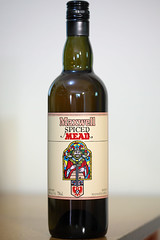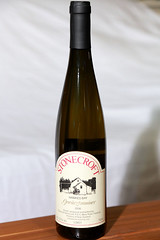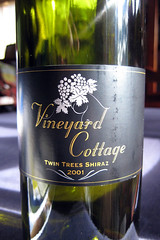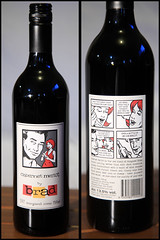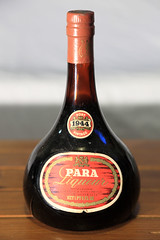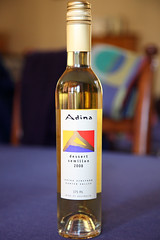
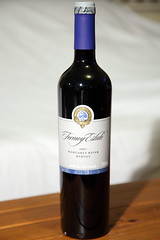 Two for one today. M. picked the Fermoy Estate merlot on our recent trek to the wine shop because she wanted to try one from Margaret River in Western Australia. We took it to a modern Australian/Italian restaurant up the road, a bit more fancy than ones we normally go to – because we had a 20% discount coupon ;-). I figured the hand-made pasta and the chicken-stuffed-with-spiced-sausage dishes we ordered would suit the wine reasonably well.
Two for one today. M. picked the Fermoy Estate merlot on our recent trek to the wine shop because she wanted to try one from Margaret River in Western Australia. We took it to a modern Australian/Italian restaurant up the road, a bit more fancy than ones we normally go to – because we had a 20% discount coupon ;-). I figured the hand-made pasta and the chicken-stuffed-with-spiced-sausage dishes we ordered would suit the wine reasonably well.
I am still really struggling with the big international red wine grape varieties. I mean, I can sort of tell the difference between merlot, cabernet sauvignon, and shiraz, but when it comes to actually describing them I’m still at a loss. Honestly, I could glean nothing out of this except the standard “blackcurranty” and “plummy” buzzwords. It was fairly tannic, but that’s really my only contribution to an original description. And I didn’t find it particularly nice, either. I need more practice with the reds.
The Adina dessert semillon on the other hand, we sipped at home as a stand-alone after-dinner sweet several days later. We’d acquired this on our trip to the Hunter Valley last year, and to my mind as we tasted things on a tour of vineyards, this was the best sweet wine of the trip. I recalled a piercing, sweet lemony acidity, which was how it first hits the nose and palate on more careful tasting. The aroma is of fresh lemons and lime, with a hint of banana. There’s fermentation prickle, which makes the lemon sweetness refreshing and it develops into a mild marmalade bitterness at the finish. It’s very light and enjoyable. We might pop into Adina Vineyard next time to grab some more.

